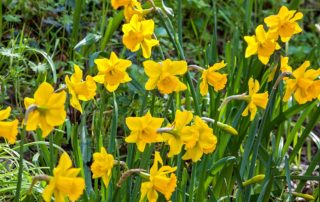Descriptions with photos of garden plants suitable for summer-dry gardens.
Oaks for Small Gardens
Native oaks are larval hosts for more kinds of butterflies than most other plants, and caterpillars are the primary food that nesting birds can feed their young. This makes oaks one of the best choices for supporting butterfly and bird populations and encouraging both to make their homes in your garden. Quercus durata, leather oak Where does that leave those whose gardens are too small for a full-sized oak? At maturity, most oaks become large to very large trees. California's valley oak, Quercus lobata, is the largest North American oak, in time reaching 75-100 feet tall and








